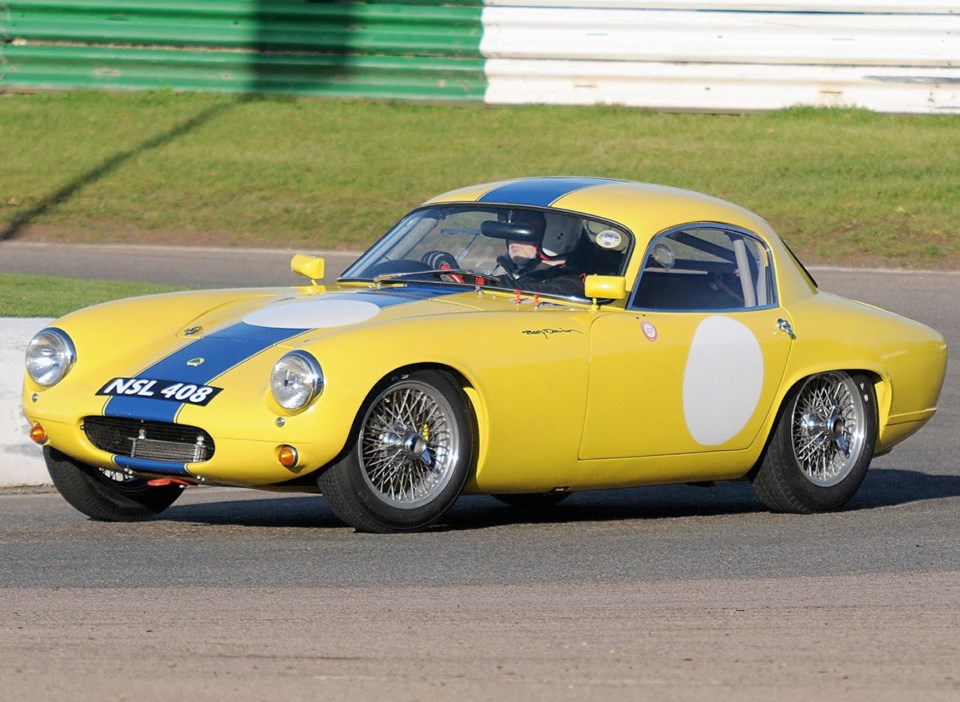Colin Chapman graduated in civil engineering from London University after the Second World War. He took to heart the engineer’s calling to pursue efficiency and purity of design in whatever he created.
His real love was car racing, so it was surprising that he chose civil rather than mechanical engineering. While still in school at age 19, he borrowed 25 British pounds from his fiancée Hazel to build his first racer in 1947, a modified Austin Seven. Dubbed the Mark I, he turned it into a competitive machine that led to more improved Marks, all spare-time projects.
Upon graduation, he took a job in the construction industry while pursuing his racing/race car building on the side. He formed Lotus Engineering Co. in 1952 with a workshop in a North London stable.
By 1955, he felt confident in launching his company into race-car building full time. His success at this convinced him to take Lotus to the next step: the production of road cars.
Chapman was encouraged in this by the 1956 announcement of an international 1300-cc Grand Touring racing class. He was convinced he could develop a competitive high-performance road coupe for the new class.
He named it the Elite, and since production targets were far higher than for any former model, Lotus’s resources could not afford the stamps and dies necessary to manufacture them out of metal. Chapman turned to a relatively new product, resin-impregnated glass fibre, generically called fibreglass. It was well known in boat building and used in the Chevrolet Corvette; Chapman’s genius was to make virtually the whole car out of fibreglass.
The groundbreaking monocoque design had three major components: undertray comprising wheel wells, a metal front subframe and transmission mounting points; an intermediate tray with all interior panels; and a moulding for the car’s exterior surfaces including the roof, fenders and trunk. There were separate door and trunk lid mouldings.
The only metal parts were the undertray’s subframe and a sturdy steel hoop moulded into the second tray ahead of the doors. Weight saving — Chapman called it “adding lightness” — was his Holy Grail, and he combined more than one function in a single component. Thus the hoop served as the door hinge attachment points and roll bar and its bottom ends were jacking points.
The construction method was basic: stack the three trays on top of one other and glue them together. The engine, driveline, suspension and steering components were bolted onto the fibreglass using rubber isolated bushings. This ingenious pioneering design was light, very strong and particularly resistant to twist.
Like many others, Chapman turned to an inline four-cylinder, single-overhead-camshaft, 75-horsepower Coventry Climax engine originally designed to power portable fire pumps. It drove the rear wheels through an MGA transmission, although some ZFs were used.
The cylinder head, block, oil pan, camshaft and timing-chain covers were aluminum. One of a fire pump engine’s requirements is to rev up from start to 5,000 rpm immediately, which requires high-volume oil flow and generous internal clearances.
The Elite was technically advanced with four-wheel independent suspension via A-arms and coil springs in front and modified MacPherson struts — Chapman called them Chapman struts — at the rear. There were front and rear anti-roll bars. Brakes were four wheel discs, inboard at the rear, and steering was rack-and-pinion.
The styling was quite handsome with input from aerodynamicist Frank Costin to reduce drag. The Elite was a very small car, only 1,168 millimetres high with a 2,235-mm wheelbase and just 3,658 mm long. It weighed a feathery 644 kilograms.
The first prototype Elite appeared at the Earls Court Motor Show in the fall of 1957. The second was delivered in May 1958 to British racing driver Ian Walker, who immediately drove it to the Silverstone track northwest of London, entered the 1300-cc class race — and won.
Impressed, he decided to see if it was really that good, and the next day Walker went to Mallory Park racing circuit near Leicester and won a 1600-cc event. Colin Chapman was in the stands.
Performance was good for its era; Road & Track recorded zero to 100 km/h in 12.2 seconds and a top speed of 185 km/h.
In spite of the Elite’s tiny dimensions, R&T’s six foot-two tester found no shortage of head or leg room.
When production of Lotus’s milestone Elite ceased in 1963, just over 1,000 had been built. Colin Chapman’s Lotus company would produce many more road and racing models, but it was the innovative little Elite that launched it into production road-going automobiles. It clearly demonstrated Chapman’s genius for efficient and groundbreaking engineering.



